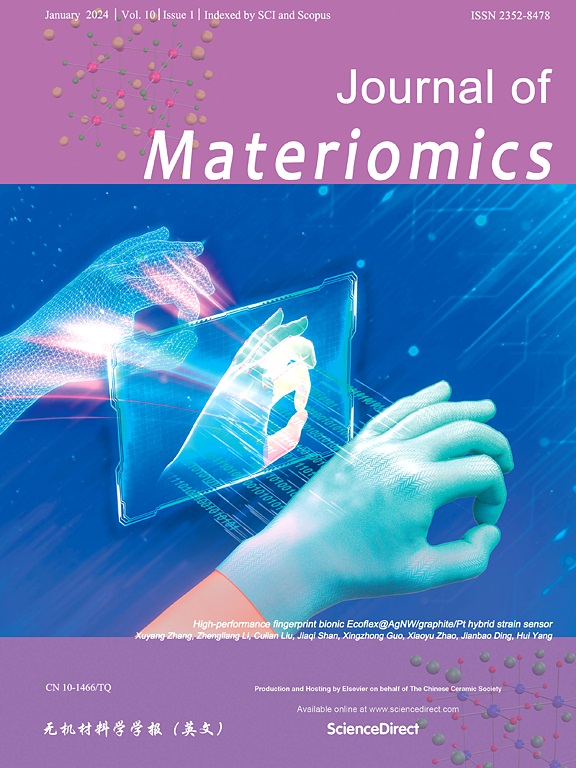Magnetic proximity effect and tunable valley splitting in 2D CrGeTe3/MTe2 (M = Mo, W) van der Waals heterostructures
IF 9.6
1区 材料科学
Q1 CHEMISTRY, PHYSICAL
引用次数: 0
Abstract
Proximity-induced magnetic exchange interactions offer a novel approach to manipulate the valley degree of freedom (DOF) in nonmagnetic monolayers without external magnetic fields. Transition metal dichalcogenides (TMDs) serve as an ideal platform for valleytronics research. Here, by introducing a two-dimensional (2D) magnetic substrate, chromium germanium telluride (CrGeTe3), we demonstrate effective control over the spin and valley properties of CrGeTe3/MTe2 (M = Mo, W) van der Waals (vdW) heterostructures. Our first-principles calculations and model Hamiltonian analysis reveal that the magnetic proximity effect (MPE) induces valley splitting and polarization in monolayer MoTe2 and WTe2 through the synergistic action of spin-orbit coupling (SOC) and proximity exchange interactions. Further investigation shows that valley splitting in these heterostructures is highly sensitive to the overlap between the atomic projection positions of TMDs and the magnetic Cr atoms, and can be continuously adjusted by varying the magnetization of CrGeTe3. Additionally, normal strain and experimentally accessible electric fields can effectively modulate the proximity exchange coupling, thus enabling extensive tunability of valley splitting. These controllable manipulations of the valley DOF through external stimuli mark a significant advancement in valleytronics, paving the way for next-generation electronic devices with enhanced performance and novel functionalities.


二维CrGeTe3/MTe2 (M = Mo, W)范德华异质结构中的磁邻近效应和可调谐谷分裂
邻近感应磁交换相互作用提供了一种新的方法来操纵无外加磁场的非磁性单层中的谷自由度。过渡金属二硫族化合物(TMDs)是谷电子研究的理想平台。在这里,通过引入二维(2D)磁性衬底,碲化铬锗(CrGeTe3),我们证明了对CrGeTe3/MTe2 (M = Mo, W)范德华(vdW)异质结构的自旋和谷特性的有效控制。我们的第一性原理计算和模型哈密顿分析表明,磁邻近效应(MPE)通过自旋-轨道耦合(SOC)和邻近交换相互作用的协同作用诱导单层MoTe2和WTe2的谷分裂和极化。进一步的研究表明,这些异质结构中的谷分裂对TMDs和磁性Cr原子的原子投影位置重叠高度敏感,并且可以通过改变CrGeTe3的磁化强度来连续调节。此外,正常应变和实验可达电场可以有效地调制接近交换耦合,从而实现谷分裂的广泛可调性。这些通过外部刺激对山谷自由度的可控操纵标志着山谷电子学的重大进步,为具有增强性能和新功能的下一代电子设备铺平了道路。
本文章由计算机程序翻译,如有差异,请以英文原文为准。
求助全文
约1分钟内获得全文
求助全文
来源期刊

Journal of Materiomics
Materials Science-Metals and Alloys
CiteScore
14.30
自引率
6.40%
发文量
331
审稿时长
37 days
期刊介绍:
The Journal of Materiomics is a peer-reviewed open-access journal that aims to serve as a forum for the continuous dissemination of research within the field of materials science. It particularly emphasizes systematic studies on the relationships between composition, processing, structure, property, and performance of advanced materials. The journal is supported by the Chinese Ceramic Society and is indexed in SCIE and Scopus. It is commonly referred to as J Materiomics.
 求助内容:
求助内容: 应助结果提醒方式:
应助结果提醒方式:


